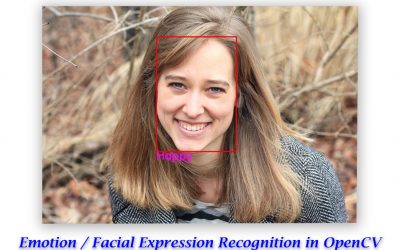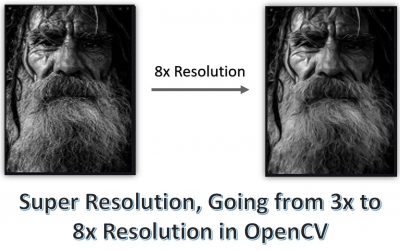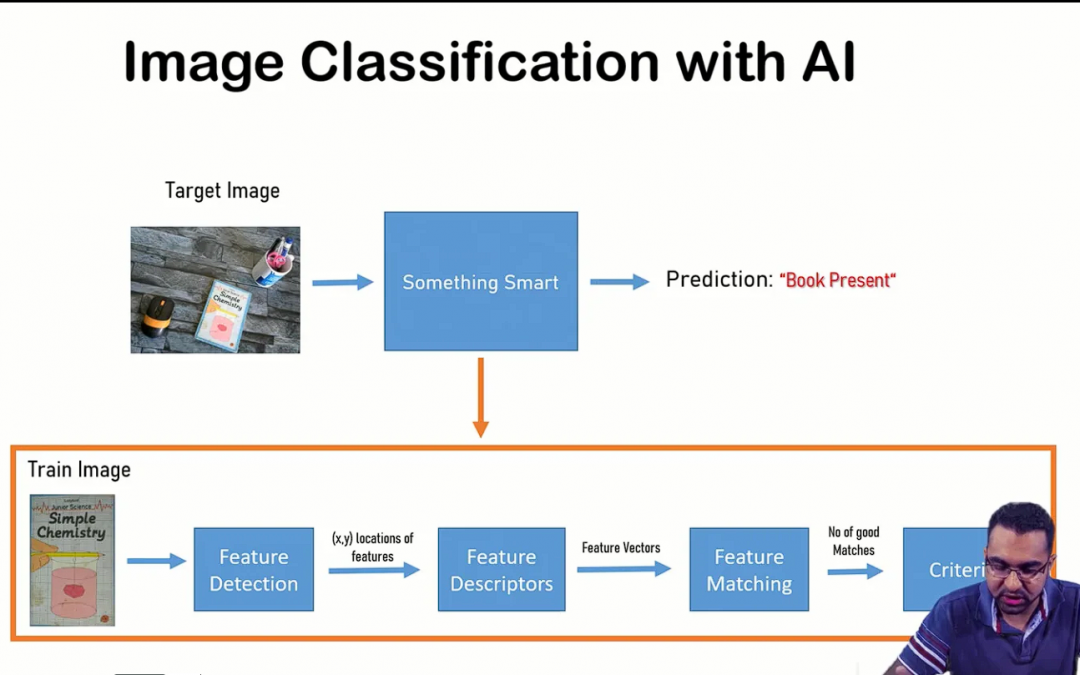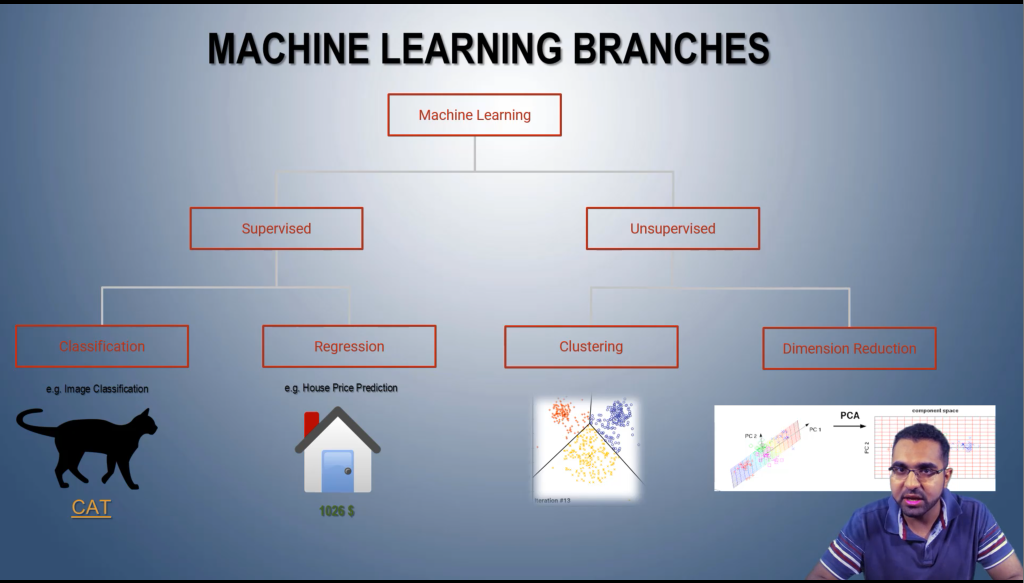Watch Video Here
In the previous episode of the Computer Vision For Everyone (CVFE) course, we discussed a high-level introduction to AI and its categories i.e., ANI(Artificial Narrow Intelligence), AGI(Artificial General Intelligence), ASI(Artificial Super Intelligence) in detail.
Now in this tutorial, we’ll see the evolution of AI throughout time and finally understand what popular terms like machine learning and deep learning actually mean and how they came about. Even if you already know these things, I would still advise you to stick around as this tutorial is actually packed with a lot of other exciting stuff too.
This episode of the CVFE course is the 2nd part of our 4-part series on AI. Throughout the series, my focus is on giving you a thorough understanding of the Artificial Intelligence field with 4 different tutorials, with each tutorial we dive deeper and get more technical.
I’ll start by discussing some exciting historical details about how AI emerged and I’ll keep it simple. So up till 1949, there wasn’t much work on Intelligent machines, yes there were some key events like the creation of the Bayes theorem in 1763 or the demonstration of the first chess-playing machine by Leonardo Torres in 1914.
But the First major interest in AI developed or the first AI boom started in the 1950s. So let’s start from there. Now I can’t cover every important event in AI, but we will go over some major ones. So let’s get started.
In 1950, Alan Turing published “Computing Machinery and Intelligence” in which he proposed “The Imitation Game” which was later known as the infamous “Turing Test.
This was a test that tests a machine’s ability to exhibit intelligent behavior like a human. If a human evaluator cannot differentiate between a machine and a human in a conversation then that machine is said to have passed the Turing Test.
There’s also a great movie built around Alan Turing and the Turing Test named The Imitation Game which I’ll definitely recommend you to check out.
In 1955, the term “Artificial Intelligence” was coined by John McCarthy and some others, it was then further described later on in a workshop in 1956, this is generally considered as the birthdate of AI.
In December 1956, Herbert Simon and Allen Newell developed the Logic Theorist, which was the first AI program.
In 1957, Frank Rosenblatt developed the Perceptron, the most basic version of an Artificial Neural Network, by the way, an extension of this algorithm alone will later give rise to the field of Deep Learning.
In 1958, Lisp was developed by John McCarthy and became the most popular programming language used in AI research.
In 1959, Arthur Samuel coins the term “Machine Learning” defining it as; The field of study that gives computers the ability to learn without being explicitly programmed.
Alright At this moment, I should probably explain what Machine learning is. As the definition above is a little confusing. But First, let’s understand what traditional or classical AI is.
In traditional AI, programmers code a lot of instructions in a machine about the task it needs to perform. So in general, you can define AI as; “A branch of computer science that focuses on creating intelligent Systems which exhibit intellectual human-like behavior.”
Or another way to say this is; “Any program which resembles or mimics some form of human intelligence is AI.”
But this is Traditional AI, not Machine Learning. Now you may be thinking what’s the problem, why do we even need machine learning when we can manually instruct machines to exhibit human-like behavior?
Well, Traditional AI itself is great and it has provided a lot of applications in the initial years of AI, but when we started to move towards more complex applications (like self-driving cars), the traditional Rule-based AI didn’t just cut it.
Consider e.g. you instruct a self-driving car to drive when it sees a green light and stop when it sees a pedestrian. What will happen if both events happen at the same time?
Although this is a really simple case and can be solved by checking both conditions, what if the pedestrian is Donald Trump, should you still stop? Or just drive through him.
Anyways pun aside, this should give you a brief idea about how such a simple application can quickly become complex with the increase in the number of variables and you can’t expect programmers to handle and code conditions for all types of future events.
So what’s the best approach?
Well, how about an approach in which we show a machine lots of examples of some object. And after the machine has learned how the object looks, we show it images of the same objects it has never seen and check if it can recognize the object or not.
Similarly by showing self-driving cars thousands and thousands of hours of data on how to drive a car, makes it learn it. This is Machine learning and it’s also how we humans learn, by watching and observing things and people around us.
So in simple words; “Machine learning is just a subset of AI that consist of all those algorithms and techniques that can learn from the data, in essence, these algorithms give computers the capability to learn without being explicitly programmed”.
Alright, now let’s move on with our timeline.
In 1961, the first industrial robot, Unimate, started working on an assembly line in a General Motors plant in New Jersey.
In 1965, Herbert Simon predicted that “within twenty years machines will be capable of doing any work a man can do.” Needless to say, it didn’t turn out that well, it’s 2021 and we’re still a long way from reaching there. In 1965, ELIZA, the first AI Chatbot, which could carry conversations in English on any topic was invented.
In 1966, Shakey, the first general-purpose mobile robot was created.
In 1969, .. …. So in 1969? …is it the moon landing? no, no, no something significantly more important happened xD. Oh yeah in 1969, the famous backpropagation algorithm was described by Arthur Bryson and Yu-Chi Ho, this is the same algorithm that has tremendously contributed to the success of deep learning applications we see today.
Around the same time, Marvin Minsky Quotes: “In from 3 to 8 years we will have a machine with the general intelligence of an average human being.” hmmm 🤔… I’m loving the confidence the AI researchers had in the last century, Props for that. Anyways, needless to say, that did not happen.
After the 50s and 60s, two decades of AI hype, the Field of AI saw its first Winter. This is defined as the period where the funding of AI research and development was cut down.
It all started in 1973, with James Lighthill Report to the British Science Research Council on the state of AI research, in summary, the report concluded that; “The promises made by the field of AI initially were not delivered and that most of the techniques and algorithms only worked well on toy problems and fall flat on real-world scenarios,” This report led to a drastic halt in AI.
After the effects of the first AI winter faded, a new AI era emerged, and this time people were more application-focused. In 1979, the Stanford Cart successfully crossed a chair-filled room without human intervention in about five hours, becoming one of the earliest examples of an autonomous vehicle.
In 1981, the Japanese ministry invested $400 million in the Fifth Generation Computer Project. The project was aimed to develop computers that could carry on conversations, translate languages, interpret pictures, and reason like human beings.
In 1986, the first driverless car, a Mercedes-Benz van equipped with cameras and sensors, was built at Bundeswehr University in Munich under the direction of Ernst Dickmanns, which drove up to 55 mph on empty streets.
At this point I should mention that in 1984, a panel called “Dark age of AI” was held, there Marvin Minsky and some others warned of a coming “AI Winter,” predicting an imminent burst of the AI bubble which did happen three years later in 1987 and again it led to a reduction in AI investment and research funding.
This was the second AI Winter and it went on for 6 years. Still, some researchers were working in the field. Like in 1989, Yann LeCun and other researchers at AT&T Bell Labs successfully applied the backpropagation algorithm to a multi-layer Convolutional Neural Network called Lenet which could recognize handwritten ZIP codes.
This was the first practical demonstration of deep learning, although the term ‘Deep Learning’ was coined later in 2006 by Geoffery Hinton. Speaking of Deep Learning, let’s understand what it is.
So remember when I explained machine learning is a set of algorithms that learns from the data. Well among those machine learning algorithms, there is an algorithm called “Perceptron”, also called an artificial neural network, which is inspired by the working of our brain. Now a perceptron contains a single layer, this layer contains nodes called Neurons.
Each neuron can remember information about the data, as it passes through it
so the greater the number of neurons, the greater the ability of the network to remember the data, similarly you can also add more layers to the network to increase its learning ability, each new layer can extract more information or features from the input data.
Not only that but each new layer builds on knowledge learned from previous layers, this way if you’re trying to build a network that can recognize cats, then the earlier layers will learn to recognize low-level features like, what are edges, or corners, etc. The later layers will learn high-level concepts like recognizing whiskers, ears, a cat’s tail, etc.
This network composed of multiple layers is called a deep neural network, and whenever you’re using Deep Neural networks or DNN’s for short, then it’s called Deep Learning.
The example I just showed you was of a Feed-Forward network and there are lots of other types of neural networks like a Convolutional Neural Network (CNN) or a Long Short Term Memory (LSTM) network and many others.
Alright, here’s a great definition of Deep learning by Youshua Bengio: One of the pioneers of modern AI. I’ve modified this definition to make it simpler.
“Deep learning is a collection of methods or models that learn hierarchies of features, at each subsequent layer in the model some features are learned, the knowledge gained in lower-level layers is used by high-level layers to learn/build abstract high-level concepts. This way the model can learn features from raw data at multiple levels of abstraction without the need of depending upon human crafted features.”
If this definition sounds complicated then I would recommend reading it again, it’s describing the same hierarchical learning system which I just explained.
Coming back to the definition, notice the last part in which I mentioned that we don’t need human crafted features, this is the main advantage of deep learning over machine learning.
In machine learning, oftentimes human engineers need to do something called feature engineering to make it easier for the model to learn but in deep learning, you don’t need to do that.
Another major advantage of deep learning is that as the amount of data increases, deep learning models get better and better, but in machine learning, after a certain point the performance plateaus. This is because most machine learning models are not complex enough to utilize and learn from all that data.
Alright, So below is an illustration of how AI, Machine Learning, and deep learning are related.
Even though Deep Learning had great promises, it didn’t take off in the 1990s, this is because at the time we didn’t have much data. The GPUs were not powerful enough. And the models and algorithms themselves had some limitations.
Now Let’s continue with our timeline.
In October 1996: Taha Anwar was born xD… Well you never know, I might create or do something man.
Anyways let’s move on.
In 1997, 2nd AI winter ended and progress in AI again Started, Sepp Hochreiter and Jürgen Schmidhuber proposed the Long Short-Term Memory (LSTM) model, a very popular type of neural network used to learn sequences of data.
In the same year, Deep Blue became the first computer chess-playing program to beat a reigning world chess champion, Garry Kasparov.
In 1998, Yann LeCun and Yoshua Bengio published papers on Neural Network applications on handwriting recognition and optimizing backpropagation.
In 2000, MIT’s Ph.D. Student Cynthia developed Kismet, a robot structured like a human face with eyes, lips, and everything. And it could recognize and simulate emotions.
In the same year, Honda introduced the ASIMO robot, the first humanoid robot to walk as fast as a human, delivering trays to customers in a restaurant setting.
In 2005, Stanley, the first autonomous vehicle won the DARPA Grand Challenge, this event greatly fuels the interest in self-driving cars.
In 2007, Fei Fei Li and colleagues at Princeton University started to assemble ImageNet, the world’s largest database for annotated images. In 2010, ImageNet Large Scale Visual Recognition Challenge was launched, which was an annual AI object recognition competition. In 2011, Watson, a natural language bot created by IBM, defeated two Jeopardy Champions.
And in the same year, Apple released Siri, a virtual assistant capable of answering questions in natural language communication.
Now let’s discuss the ImageNet challenge again. This competition ran from 2010 till 2017 and was responsible for some great architectural innovations in modern AI algorithms.
Perhaps the most revolutionizing year for this competition and a landmark year in AI was 2012 when a team under Geoffery Hinton presented AlexNet (a type of Convolutional Neural Network) in the competition.
Now this Deep Neural Network was cooked up just right by Geoffery Hinton, Alex Krizhevsky, and their team. The timing was perfect, in 2012 we had all the required ingredients to finally make deep learning work.
We had the required Data (ImageNet) with millions of high-resolution images, the Computation Power (as 2012 offered a lot of Great high-powered GPUs), and we also had made tremendous strides in the Architectural improvement of neural networks.
And when they combined all these elements at the right time, AlexNet was born.
A network that got only a 16% error rate on ImageNet competition, a 25% improvement from the year before.
This was a huge milestone. In the next year, all winning entries were using Deep learning models and finally, Deep Learning had taken OFF.
What followed in the years after, was innovation upon innovation in AI using deep learning approaches. Not only in research but we saw AI being successfully applied to almost every other industry.
Every year billions of dollars are being pumped by investors in AI. hundreds of promising new AI Startups are appearing and thousands of papers are being published in AI each year.
And a lot of initial success in AI can be attributed to 3 people which are also known as the Pioneers of Modern AI. They are; Yann Lecun, Geoffrey Hinton, and Yoshio Bengio.

Summary
In this episode of the CVFE course, we discussed the history of AI and how it became one of the most promising fields along with the winters it faced in the past, and what exactly terms like Machine Learning and Deep Learning mean.
Now one question you might have is….Will there be a 3rd AI Winter? And to be honest, the answer is no!
In 2016, DeepMind’s AlphaGo defeated the World Go champion, a very difficult feat. In 2019, OpenAI Five beats Dota 2 experts, a game that requires a lot of skill to master.
In 2020, language models like OpenAI’s GPT 3, stunned the world with their abilities.
So no, the next AI winter is not coming anytime soon as; AI is seeing its best years. Just in 2020, Eugene became the first AI machine to pass the Turing Test by convincing 33 judges that it was a 13-year-old Ukrainian boy.
How Cool and equally frightening is that?
With this I conclude part 2, in the next episode of this series, I’ll go into more detail and discuss different branches of Machine learning.
In case you have any questions, please feel free to ask in the comment section and share the post with your colleagues if you have found it useful.
You can reach out to me personally for a 1 on 1 consultation session in AI/computer vision regarding your project. Our talented team of vision engineers will help you every step of the way. Get on a call with me directly here.
Ready to seriously dive into State of the Art AI & Computer Vision?
Then Sign up for these premium Courses by Bleed AI
Make sure to check out part 1 of the series and Subscribe to the Bleed AI YouTube channel to be notified when new videos are released.






0 Comments